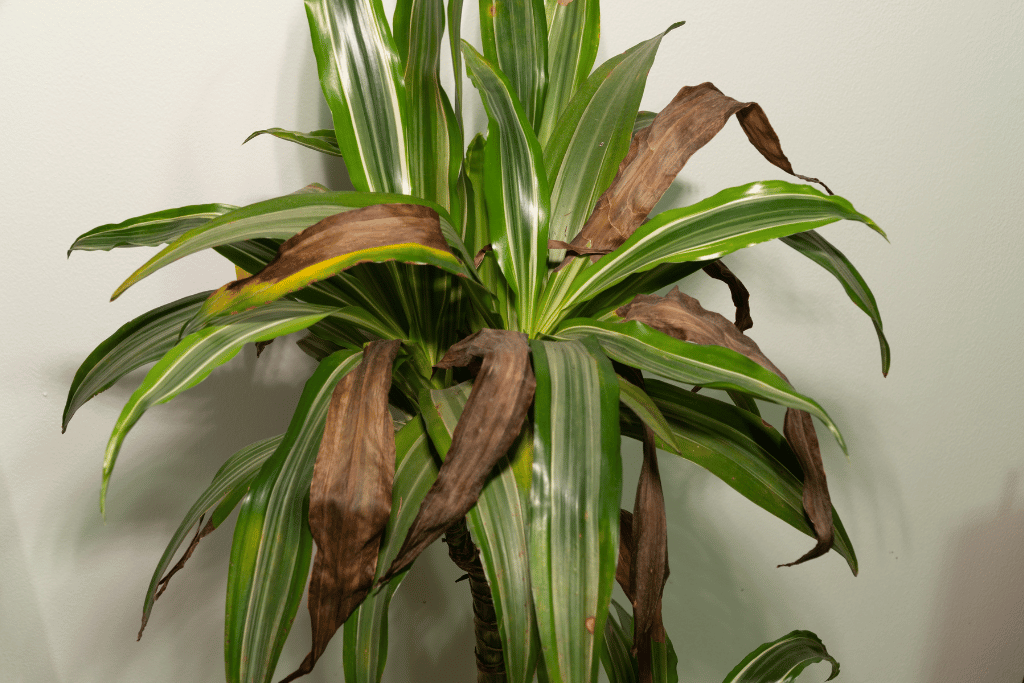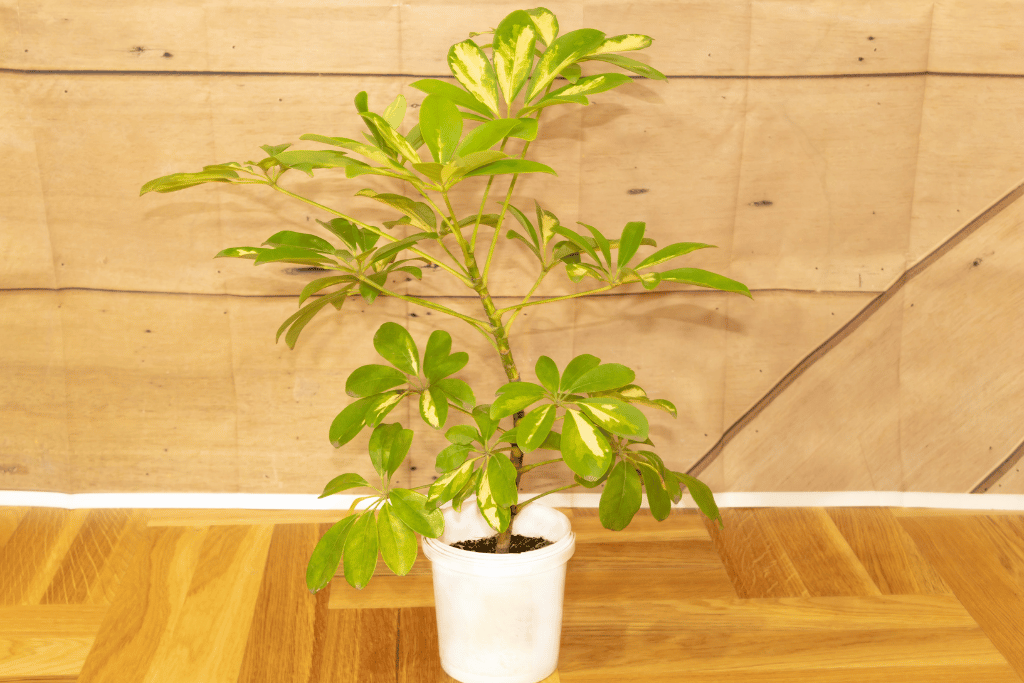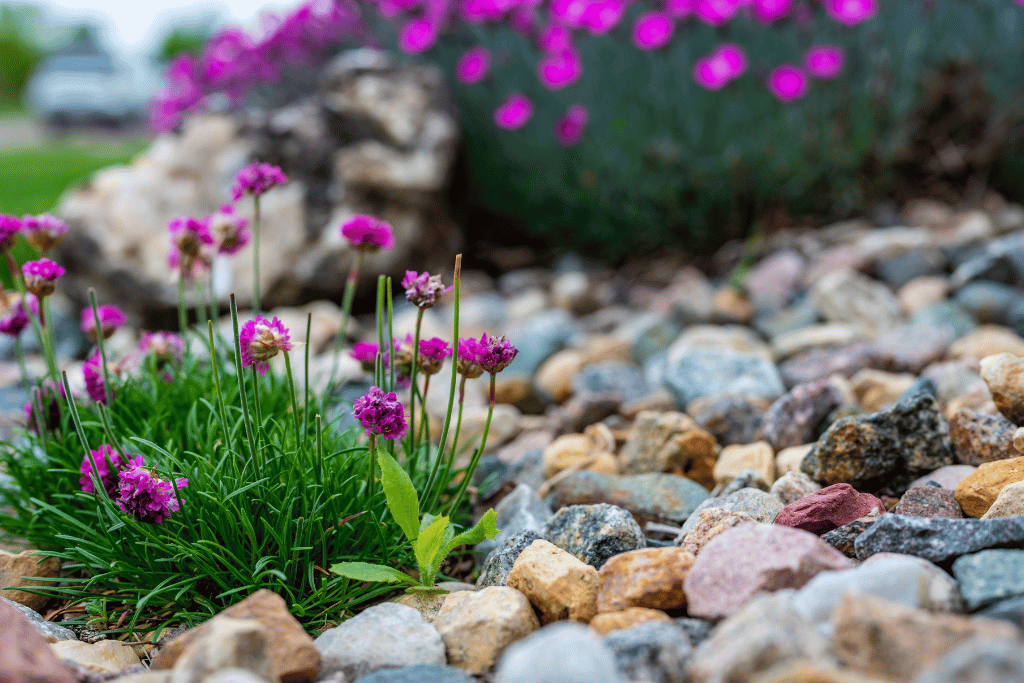
Embarking on a journey through the uncharted territories of neglected gardens and dismissed landscapes, I find myself irresistibly drawn to the enigmatic allure of weeds adorned with purple flowers. These botanical rebels, often relegated to the outskirts of horticultural regard, possess an innate charm that refuses to be overlooked. Their vibrant hues and overlooked intricacies weave an enchanting narrative within the tapestry of outdoor spaces, a narrative I’m eager to share.
As I venture deeper into this clandestine realm, the spectrum of purple-flowered weeds unfurls a story of resilience and individuality. Standing tall in its spiky defiance is the regal Bull Thistle, challenging conventional notions of beauty. At the same time, the unassuming Creeping Charlie graces the ground with its delicate, tubular blossoms, defying its label as a mere nuisance.
Throughout this exploration, I encounter not just flora but protagonists in a narrative that celebrates the unbridled beauty of the untamed. The graceful Wild Violet and the charming Henbit dance alongside the tenacious Purple Loosestrife, commanding attention with its magenta-purple spires, despite its invasive tendencies. These are not mere weeds; they are stories waiting to be heard.
Join me in this botanical odyssey as I traverse landscapes where the Purple Dead Nettle sprawls in defiance of its name and where the humble Milk Thistle, with its white-veined leaves and striking small purple flowers, holds secrets of ancient herbal wisdom.
Reimagining these botanical rebels not as intruders but as storytellers, I find myself immersed in tales of survival, adaptation, and unexpected beauty. These weeds with purple flowers beckon me to reconsider preconceived notions, urging me to appreciate the untamed elegance that flourishes where least expected.
Tall Weed with Purple Flowers:
Purple Loosestrife (Lythrum salicaria):
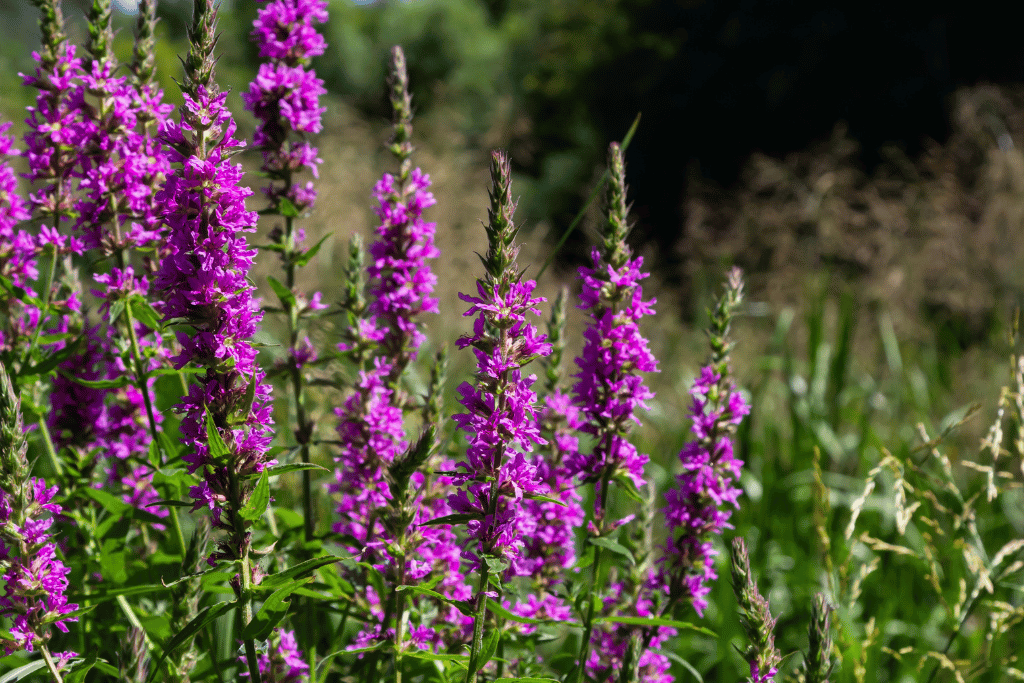
Purple Loosestrife stands proudly as a tall perennial, often reaching heights of 4 to 7 feet. Its signature feature is the spiky arrangement of magenta-purple flowers, forming dense, vertical clusters along tall stems. The lance-shaped leaves are arranged oppositely along the stems and boast a distinct reddish-purple hue.
This captivating plant thrives in wetland areas, marshes, and along the edges of ponds and streams. While admired for its aesthetic appeal, Purple Loosestrife is also known for its invasive nature, outcompeting native vegetation and potentially disrupting local ecosystems. Efforts are often made to control its spread and maintain ecological balance.
Bull Thistle (Cirsium vulgare):
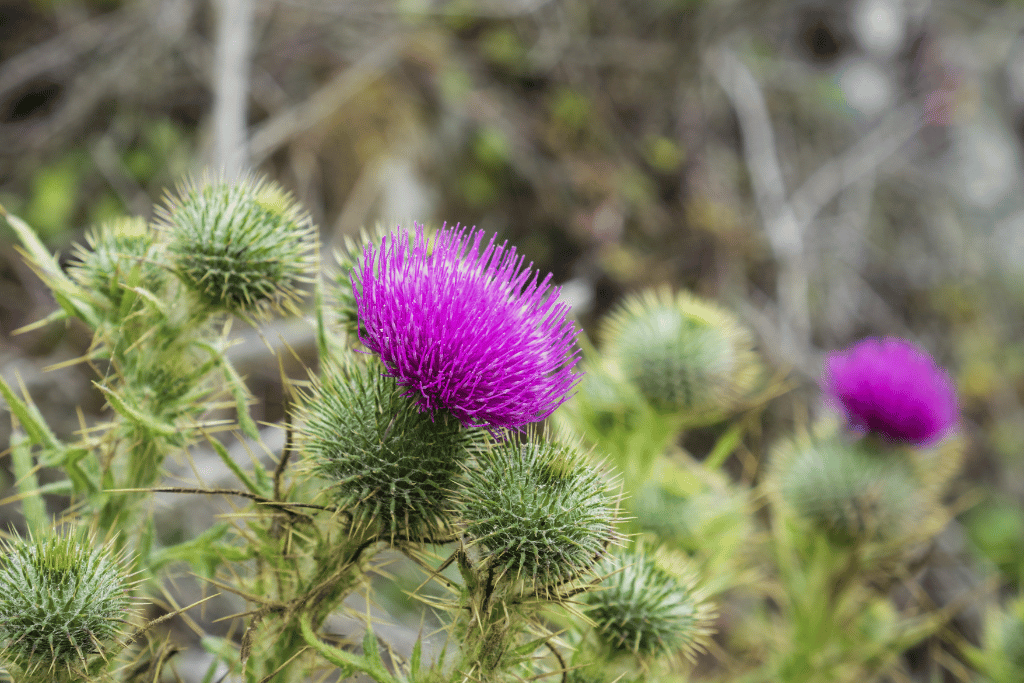
Reaching heights of 3 to 6 feet, Bull Thistle is recognized by its robust stature as a spiny biennial. Showcasing deep purple hues, the large flower heads are shaped like globes, standing out, each surrounded by sharp, prickly bracts. The leaves, deeply lobed and covered in spines, add to its formidable appearance.
This thistle is a common sight in disturbed areas, fields, and along roadsides. Its deep taproot allows it to withstand drought conditions, contributing to its resilience. While considered a weed, it plays a role in supporting pollinators with its nectar-rich flowers. However, its aggressive nature and ability to form dense stands can make it challenging to manage in certain landscapes.
Canada Thistle (Cirsium arvense):
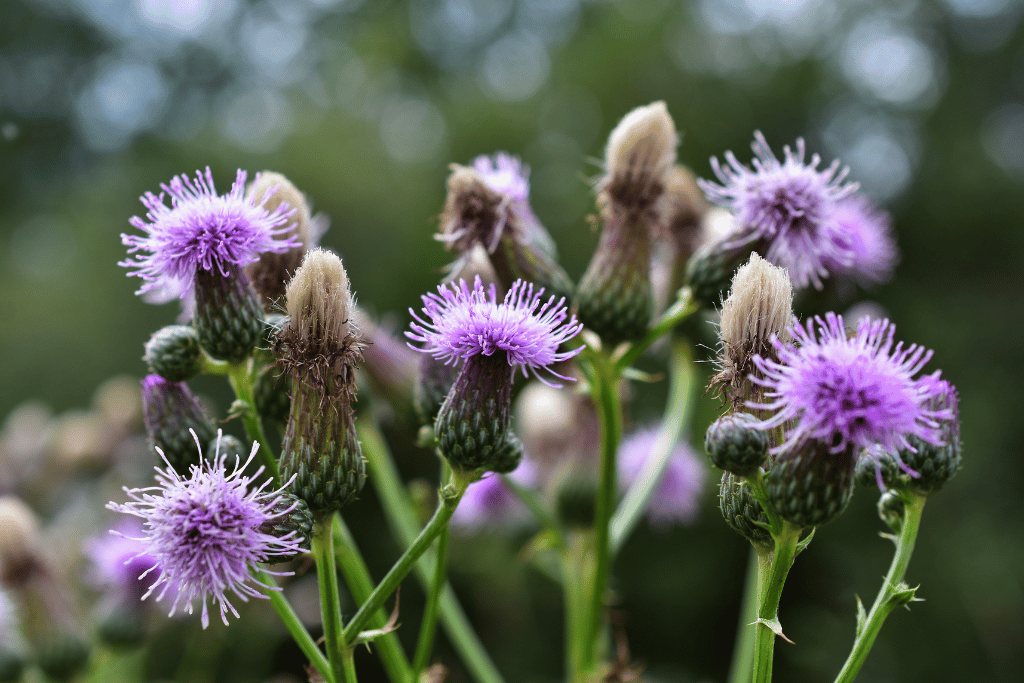
Adaptable and tenacious, Canada Thistle is a perennial weed that typically grows 2 to 5 feet tall, with its spiky appearance. The lance-shaped leaves, armed with sharp spines along the edges, are deeply lobed. The compact flower heads, ranging from pink to purple, form clusters at the ends of branching stems.
Thriving in a variety of environments, including meadows, pastures, and disturbed areas, this weed is known for its aggressive growth. Canada Thistle has the ability to reproduce through both seeds and extensive underground root systems. Considered invasive in some regions, its control often requires strategic management practices to prevent its spread and impact on native flora.
Purple Starthistle (Centaurea calcitrapa):
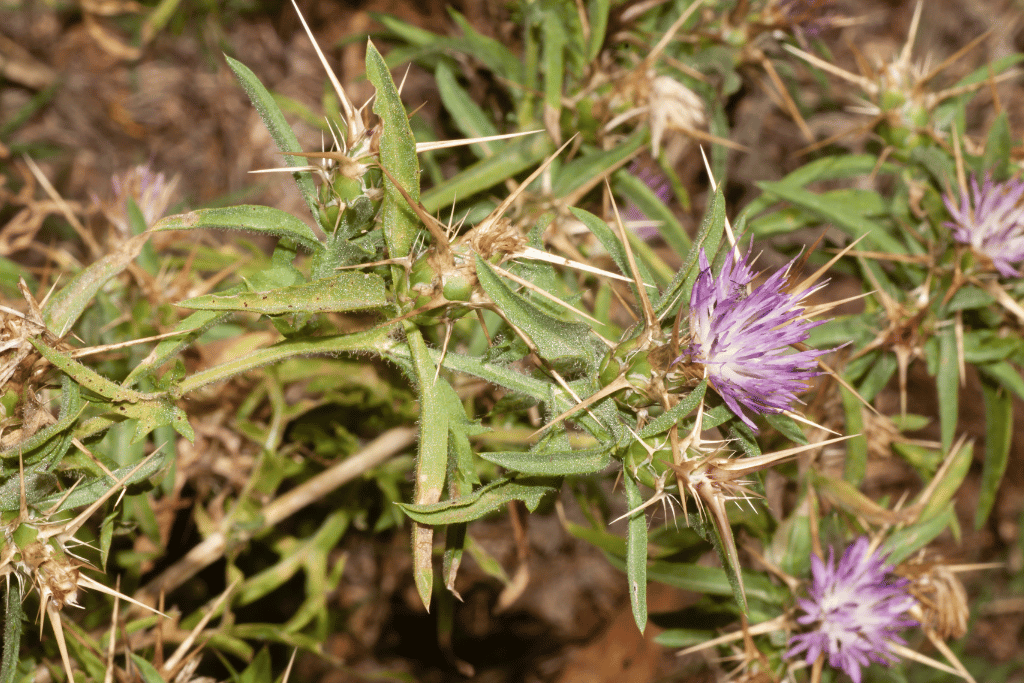
The Purple Starthistle, a thorny annual, showcases distinctive features that set it apart. Its branching stems bear thistle-like leaves, and at the ends, vibrant purple-pink flower heads emerge. These spiky blooms contribute to its allure, making it easily recognizable. The plant exudes a hardiness that allows it to flourish in disturbed areas and spaces facing environmental challenges.
This thorny annual finds its niche in areas that have undergone disturbance, such as roadsides and abandoned fields. The Purple Starthistle is recognized for its adaptability to harsh conditions and its ability to add a touch of color to otherwise barren landscapes. While deemed a weed in certain contexts, its resilience is a testament to nature’s ability to thrive under adverse circumstances.
Nodding Thistle (Carduus nutans):
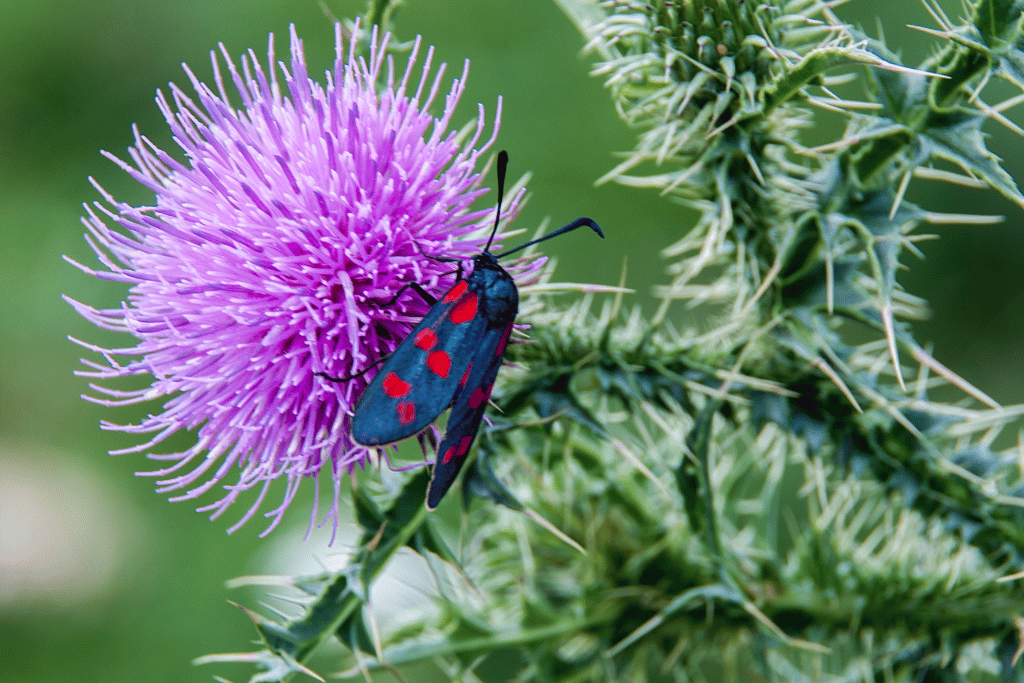
Nodding Thistle derives its name from the distinctively drooping quality of its flower heads. Standing at heights ranging from 2 to 5 feet, this biennial boasts spiny leaves and stems, contributing to its unique character. The nodding flower heads, adorned with purple-pink blossoms, impart an elegant yet resilient profile, defining the plant’s visual appeal.
Despite its tendency to be invasive, Nodding Thistle possesses a certain grace that challenges conventional perceptions of weeds. Observers are prompted to appreciate the intricate beauty found in unexpected places, as this biennial often thrives in disturbed areas, along roadsides, and in meadows. The nodding quality of its flower heads adds a distinctive aesthetic element to its surroundings, making Nodding Thistle a captivating presence in various landscapes.
Spotted Knapweed (Centaurea maculosa):
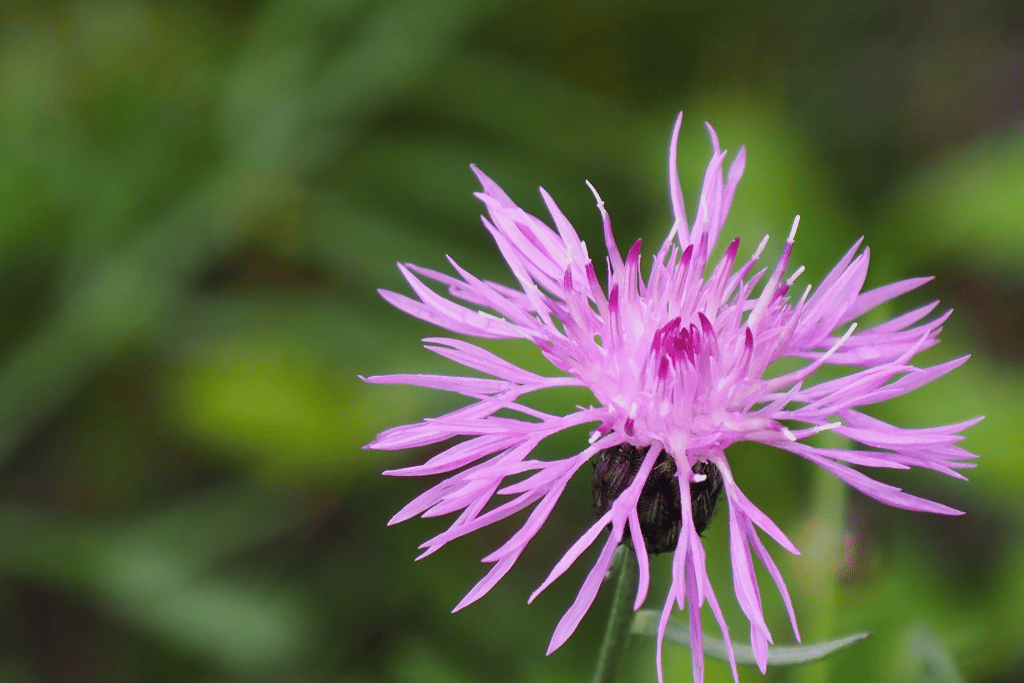
Originally from Europe, Spotted Knapweed has adapted well to North American landscapes, particularly in disturbed areas. Despite its charming appearance, its aggressive nature poses a threat to native vegetation. Efforts are often undertaken to manage its spread and protect the biodiversity of ecosystems where it has taken root.
The Spotted Knapweed, a biennial with spiky purple flower heads, is characterized by lance-shaped leaves covered in fine hairs. Its flower heads are distinctive, featuring purple petals and spiky bracts with dark spots, giving it its ‘spotted’ appearance. While visually striking, this weed has garnered attention for its invasiveness in North America.
Weed with Small Purple Flowers
Creeping Charlie (Glechoma hederacea):
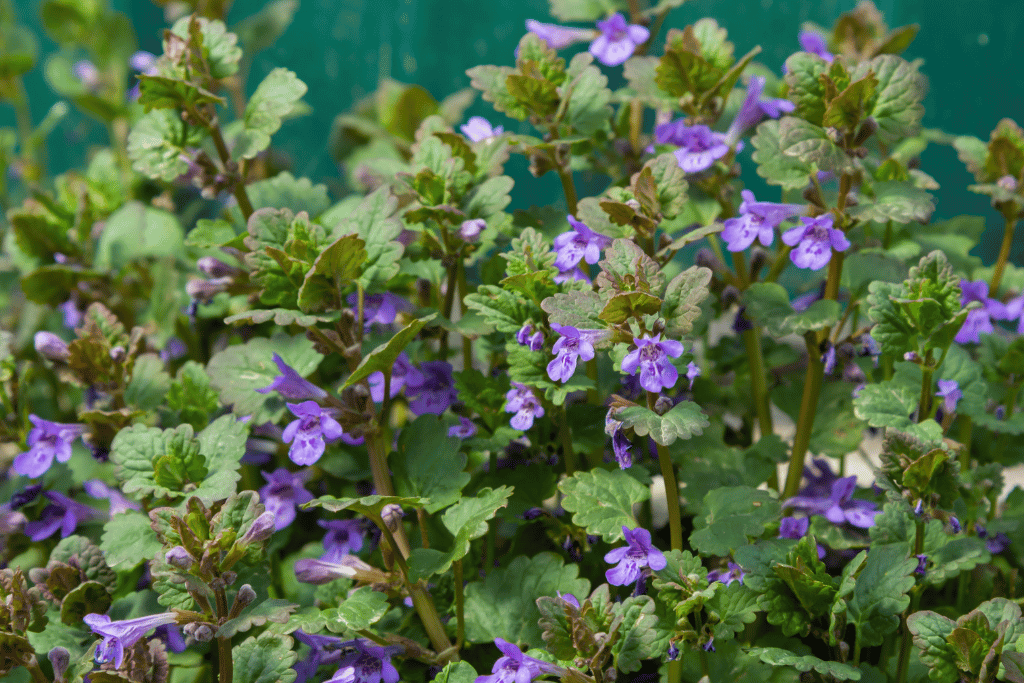
Creeping Charlie, scientifically known as Glechoma hederacea, is a low-growing perennial that typically reaches heights of 2 to 8 inches. It spreads horizontally, forming dense mats of rounded leaves and small, tubular purple flowers. The leaves are kidney-shaped, and the square stems trail along the ground. Recognizable by its aromatic foliage, Creeping Charlie is often used as ground cover in gardens.
This resilient plant thrives in shaded areas, lawns, and moist soils. While it’s appreciated as an ornamental ground cover in certain landscaping contexts, Creeping Charlie is also notorious for its invasive nature. Gardeners often find themselves in a delicate balance, appreciating its visual appeal while managing its tendency to overtake lawns.
Purple Dead Nettle (Lamium purpureum):
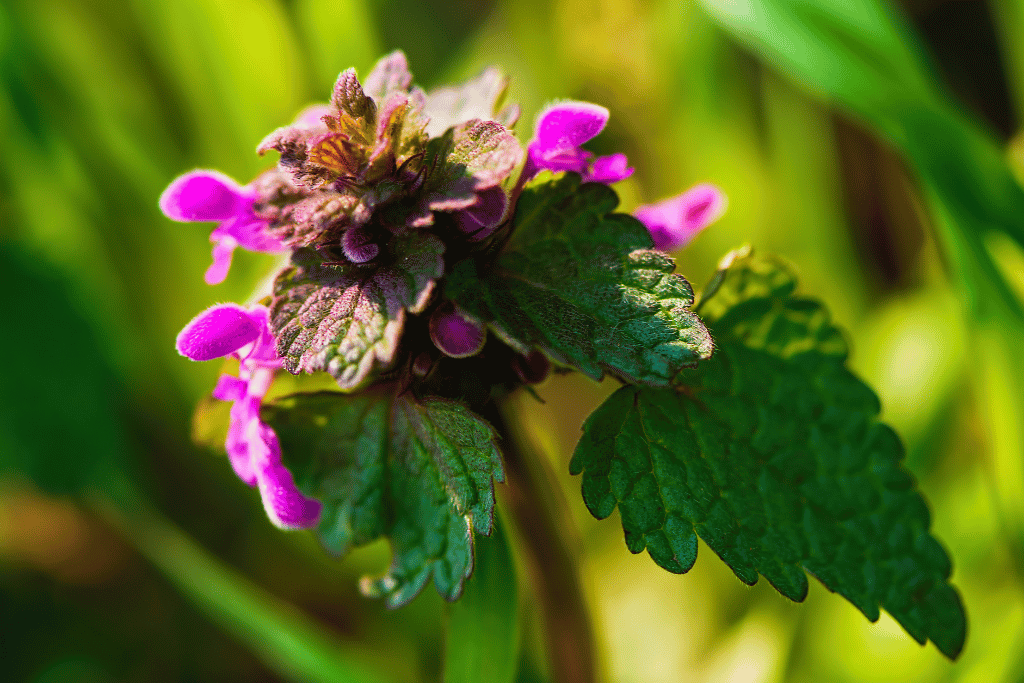
Purple Dead Nettle, is a low-growing annual plant that reaches heights of 4 to 12 inches. It is often mistaken for a true nettle due to its similar appearance, but it lacks the stinging hairs. The leaves are heart-shaped and serrated, while the distinctive flowers are purple-pink and arranged in whorls. This plant is known for its rapid colonization of disturbed areas.
Purple Dead Nettle thrives in various habitats, including lawns, gardens, and waste areas. It’s quick to establish itself in disturbed or neglected spaces, contributing to soil stabilization. While it can be considered a weed in manicured lawns, its early-season blooms provide essential nectar for pollinators, making it a valuable component of ecosystems.
Henbit (Lamium amplexicaule):
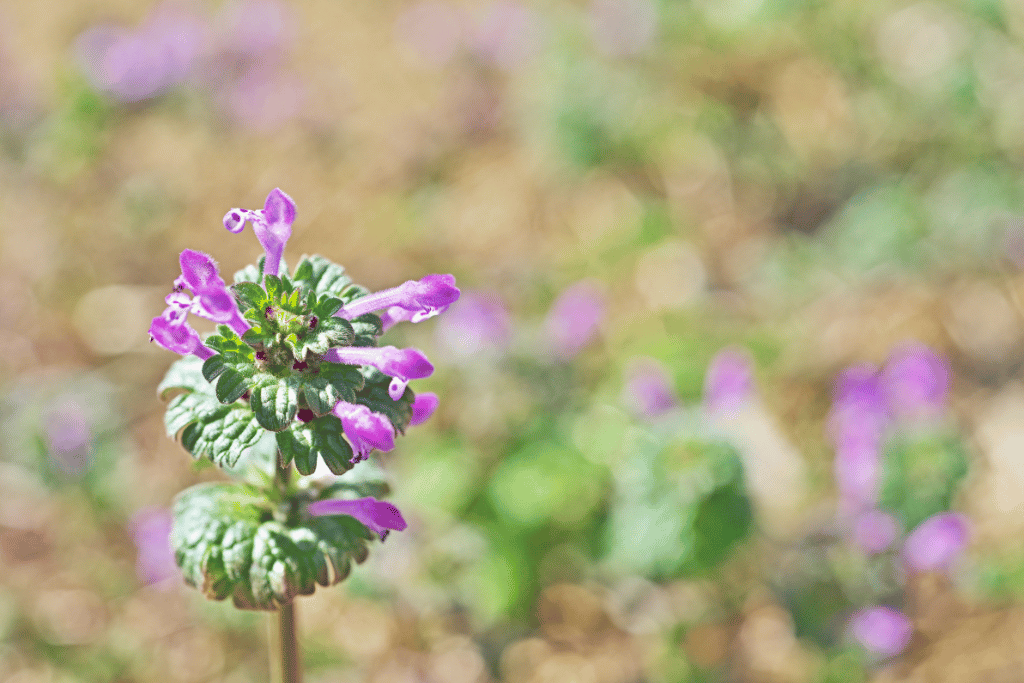
Henbit is an annual plant boasting an upright growth habit, achieving heights ranging from 4 to 12 inches. Displaying square stems, leaves arranged in opposition embracing the stem, and vibrant clusters of purple flowers, this plant presents an overall lush and verdant appearance, punctuated by the visually striking contrast of its purple blooms.
Encountered commonly in lawns, gardens, and disturbed areas, Henbit heralds the advent of spring with its abundant purple blossoms. While some admirers appreciate the early-season burst of color, others label it a weed due to its rapid spreading capability. Its proliferation in lawns poses a challenge for those aspiring to maintain a pristine and uniform grassy expanse.
Milk Thistle (Silybum marianum):
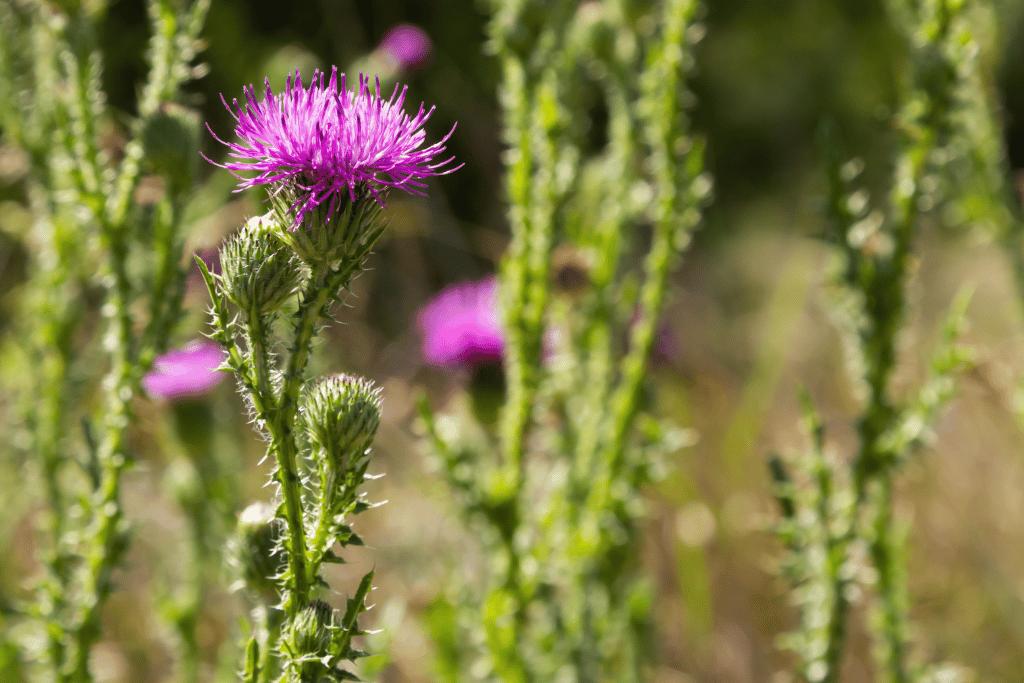
Native to the Mediterranean region, Milk Thistle has become widespread globally. It is commonly found in disturbed areas, along roadsides, and in fields. Beyond its aesthetic appeal, Milk Thistle has gained recognition for its medicinal properties, particularly its potential to support liver health. The plant contains a bioactive compound called silymarin, known for its antioxidant and anti-inflammatory properties.
Milk Thistle, scientifically known as Silybum marianum, is a striking biennial plant that reaches a height of 3 to 10 feet. Its most distinctive features include large, glossy leaves with prominent white veins, providing a visually arresting contrast. The plant produces spiny stems and, as the name suggests, striking small purple flowers that cluster together in a captivating display.While celebrated for its medicinal benefits, Milk Thistle can also be deemed a weed, especially when it invades cultivated fields or disrupts natural ecosystems. Its ability to self-sow and establish in various environments has led to both intentional cultivation and management efforts to control its spread in certain contexts.
Weed with Purple Flowers in Lawn
Wild Violet (Viola sororia):
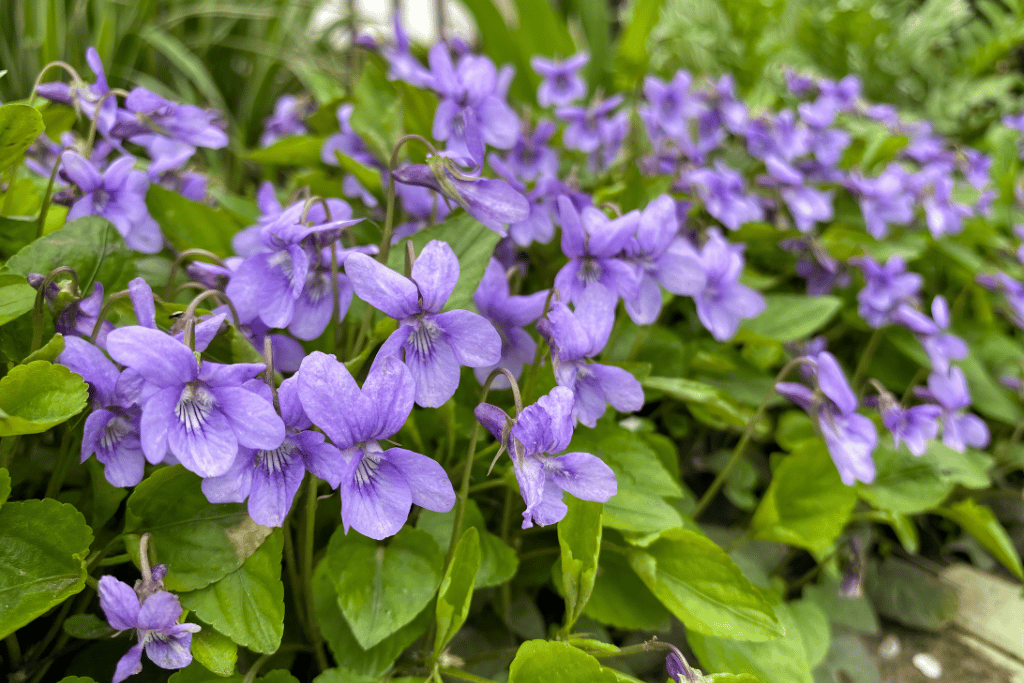
Wild Violet, scientifically known as Viola sororia, is a delightful perennial renowned for its charming presence, typically reaching a height of 4 to 6 inches. Distinguished by heart-shaped leaves and delicate, dainty purple flowers, this plant exudes an enchanting allure. The flowers boast five petals, with two upper and three lower, displaying a captivating range of hues from shades of blue to deep purple. Clustering together, Wild Violet often forms a stunning carpet of color.
Thriving in diverse environments, this perennial can be found gracing lawns, woodlands, and meadows alike. Its versatility and resilience make it a welcome presence in various settings. While some gardeners admire the aesthetic appeal of Wild Violet, others may be wary of its invasive nature in lawns, where it competes with grass for space. Nevertheless, for those who appreciate a more naturalized and varied lawn, the nodding blooms of Wild Violet remain a cherished favorite.
Heal-All (Prunella vulgaris):
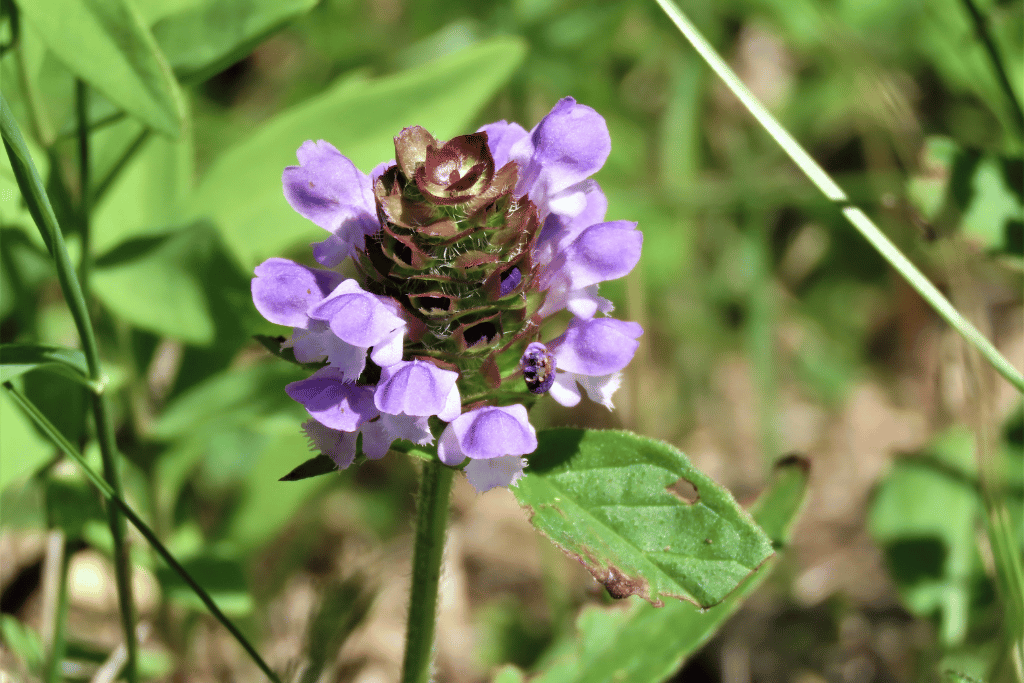
Heal-All is a low-growing perennial herb with a distinctive appearance, scientifically known as Prunella vulgaris. It reaches heights of 4 to 18 inches and features square stems, opposite leaves, and spikes of tiny, tubular purple flowers. Commonly found in lawns, fields, and disturbed areas, Heal-All is known for its ability to adapt to various soil conditions.
Despite its classification as a weed in some contexts, this herb has a history of traditional medicinal uses. The leaves are lance-shaped, and the overall plant has a creeping habit, often forming dense mats. It has been employed in herbal remedies for its purported healing properties, contributing to its common name.
Bush Vetch (Vicia sepium):
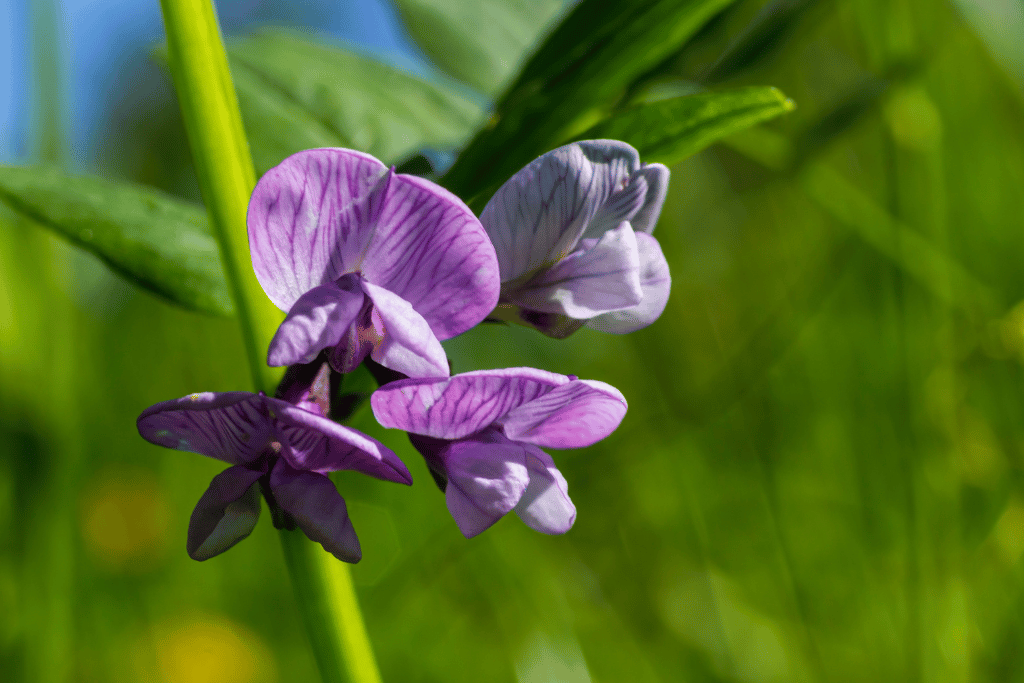
Bush Vetch, or Vicia sepium, is a climbing perennial that can reach lengths of 3 to 6 feet. It boasts cascades of purple flowers arranged in dense clusters along the stems. The compound leaves are composed of numerous small leaflets, giving the plant a lush and verdant appearance. While considered a weed in certain contexts, its ability to fix nitrogen in the soil adds an ecological dimension to its presence.
This vetch species thrives in lawns, gardens, and along roadsides. While some may view it as an invasive weed due to its rapid growth and potential to smother other plants, others appreciate its ecological benefits. Bush Vetch has the capacity to improve soil fertility by fixing nitrogen, contributing to the overall health of ecosystems. The delicate, cascading flowers add a touch of wild beauty to the landscape.
Weed Close to Ground with Purple Flowers
Bugleweed (Ajuga reptans):
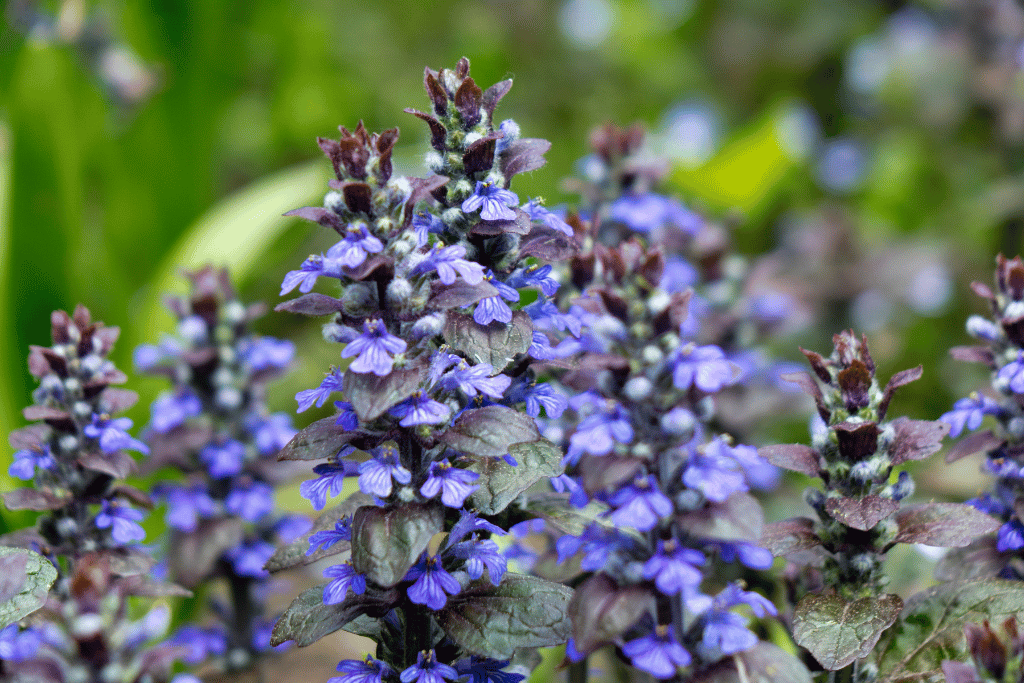
Commonly found in lawns, gardens, and woodland edges, Bugleweed is appreciated for its ability to serve as an effective ground cover. Typically reaching heights of 4 to 6 inches, it features glossy, oval leaves arranged in rosettes and spikes of distinctive blue-purple flowers. The flowers, arranged in dense clusters, create a carpet of color close to the soil.
Bugleweed, scientifically known as Ajuga reptans, is a ground-hugging perennial that forms dense mats close to the ground. Its low, spreading habit makes it particularly useful for suppressing weeds and stabilizing soil. Beyond its practical applications, the vibrant blue-purple spikes contribute to the visual appeal of the landscape.
Dove’s Foot Cranesbill (Geranium molle):
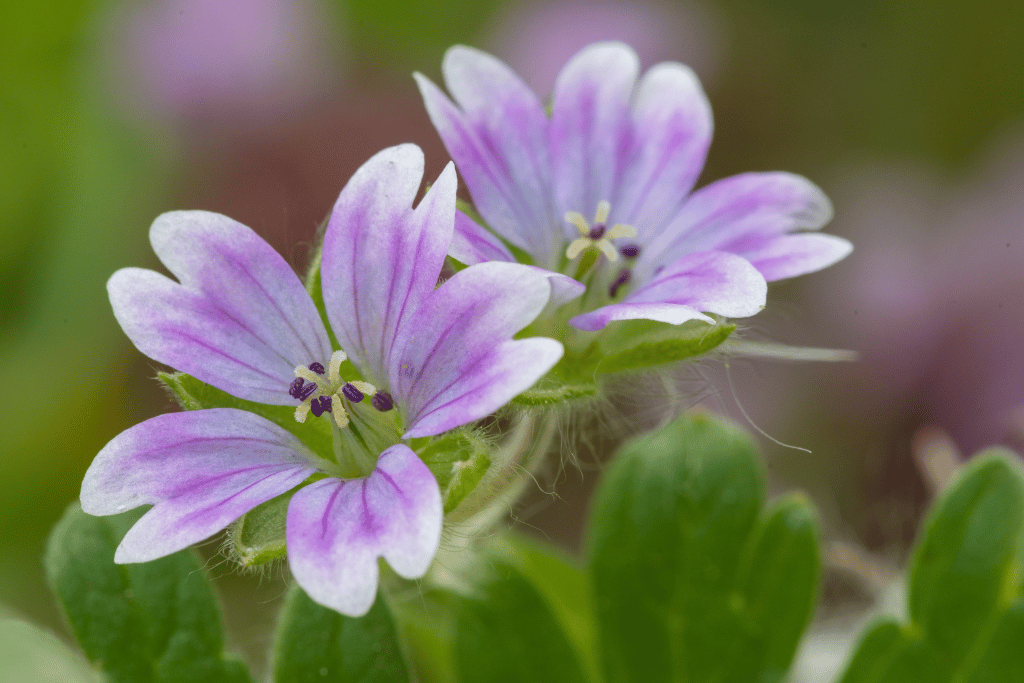
Dove’s Foot Cranesbill, or Geranium molle, is a low-growing plant that can be either an annual or a perennial. Its deeply lobed leaves resemble the shape of a crane’s bill, contributing to its common name. The small, cup-shaped flowers are purple-pink and appear in clusters. This plant typically grows to heights of 6 to 12 inche
Widespread in lawns, fields, and disturbed areas, Dove’s Foot Cranesbill is often found in diverse environments. It blooms during the spring and summer months, creating patches of color close to the ground. While some appreciate its delicate appearance, others may consider it a weed in lawns where a uniform grassy expanse is desired.
Weed That Looks Like Clover with Purple Flowers
Red Clover (Trifolium pratense):
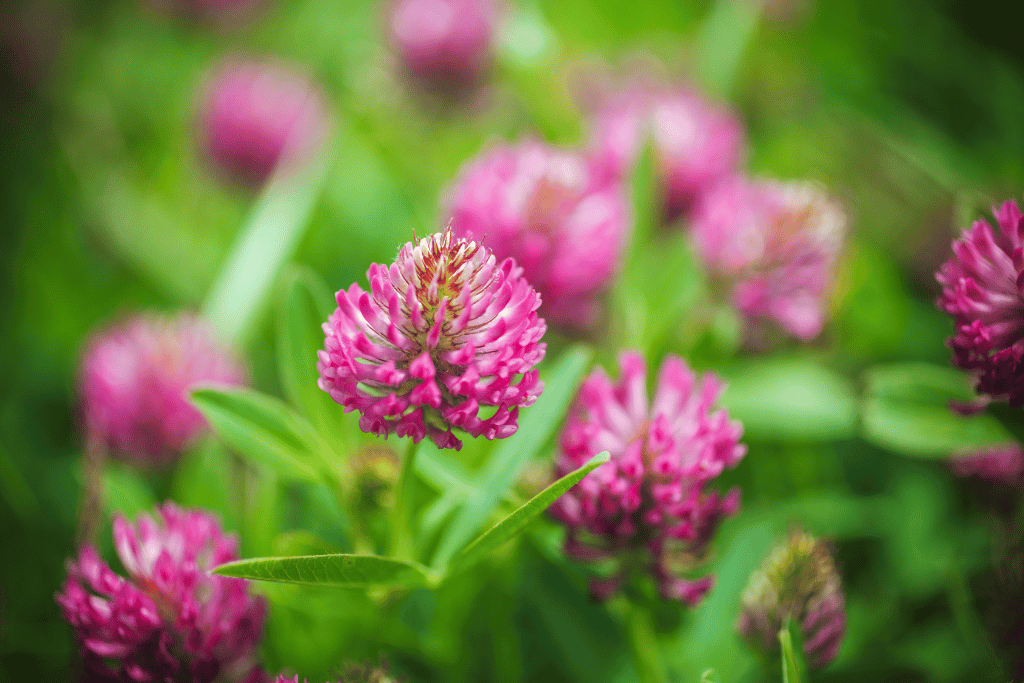
Red Clover, is a well-known leguminous plant that is easily identified by its distinctive features. This herbaceous perennial typically reaches heights of 12 to 18 inches. Its leaves are compound and consist of three leaflets, a characteristic trait shared by many clover species. The trifoliate leaves are often marked with a white V-shaped pattern. Found in lawns, meadows, and fields, Red Clover has a broad habitat range and adapts well to different soil conditions. Its ability to fix nitrogen in the soil enhances its ecological significance, contributing to soil fertility.
One of the key ecological contributions of Red Clover lies in its ability to form symbiotic relationships with nitrogen-fixing bacteria in its root nodules. This process enhances soil fertility by converting atmospheric nitrogen into a form that plants can utilize. As a result, Red Clover is often included in crop rotations to improve soil health and reduce the need for synthetic nitrogen fertilizers. Beyond its ecological benefits, Red Clover has cultural and medicinal significance. It has been used in traditional herbal medicine for its potential to alleviate various conditions. Red Clover is cultivated for various purposes, including as forage for livestock and as a cover crop in agricultural rotations.
Additionally, its use as a forage crop provides valuable nutrition for livestock. While prized for its versatility, Red Clover’s robust growth can lead to its classification as a weed in lawns where a uniform grassy appearance is desired.
Tall Weed with Little Purple Flowers Oozing Clear Stuff When Cut
Common Burdock (Arctium minus):
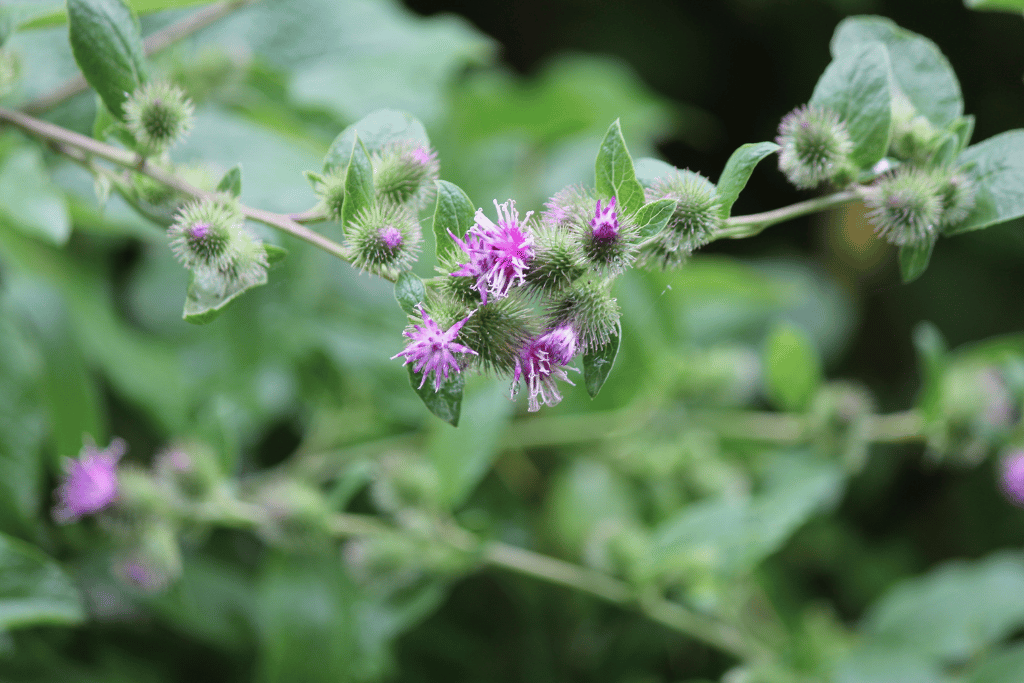
Common Burdock has a rich history of use in herbal medicine, particularly in traditional Asian and European practices. The roots, leaves, and seeds have been utilized for various purposes, including as a diuretic and for skin conditions. The burrs were famously the inspiration for the invention of Velcro due to their ability to stick to clothing. It stands as a distinctive biennial plant that can reach impressive heights of 3 to 7 feet. Recognizable by its robust stature, it features large, heart-shaped leaves with pronounced veining and a dense covering of fine hairs. The plant produces clusters of purple flowers, and its most iconic feature is the burr-like seed heads that cling to clothing or animal fur.
This hardy plant is adaptable to a variety of environments and is commonly found in fields, meadows, along roadsides, and in disturbed areas. Originating in Europe and Asia, Common Burdock has become widespread globally, including North America. It thrives in locations with well-drained soil and plenty of sunlight. While Common Burdock has historical uses and ecological benefits, its tenacious growth and burr dispersal can pose challenges in certain landscapes. The burrs, equipped with hooks, easily attach to clothing and animal fur, aiding in seed dispersal but often causing inconvenience. In agricultural settings, it is sometimes considered a weed due to its ability to outcompete crops.
Beyond its historical and medicinal uses, Common Burdock is also edible. The taproot can be harvested and prepared in various culinary dishes. The root is known for its earthy flavor and has been used in traditional cuisines. However, given its robust growth, caution is advised in harvesting from areas where pesticides or other contaminants may be present.
How to Kill Purple Clover-Looking Weed with Yellow Flowers that Go to Seed
The efficacy of control methods often depends on the specific characteristics of the weed, including its growth habits, root system, and susceptibility to various treatments.
Alternatively, consulting with a local horticulturist, agricultural extension service, or a professional weed control service in your area could offer tailored recommendations based on a physical inspection of the weed.
Keep in mind that controlling weeds often involves a combination of cultural, mechanical, and chemical methods. It’s essential to consider the surrounding environment, the type of vegetation you want to protect, and any potential environmental impact when choosing a control strategy.
General weed control practices include:
Hand Pulling: For smaller infestations, manually removing the weeds, including the roots, can be effective. Be sure to wear gloves to protect your hands.
Mulching: Applying a layer of organic mulch can help suppress weed growth by blocking sunlight and hindering germination.
Herbicides: Depending on the specific weed and the surrounding vegetation, selective herbicides designed for broadleaf weeds may be effective. However, careful consideration is needed to avoid harming desirable plants.
Cultural Practices: Improving lawn health through proper watering, fertilization, and mowing can create conditions less favorable for weed growth.


